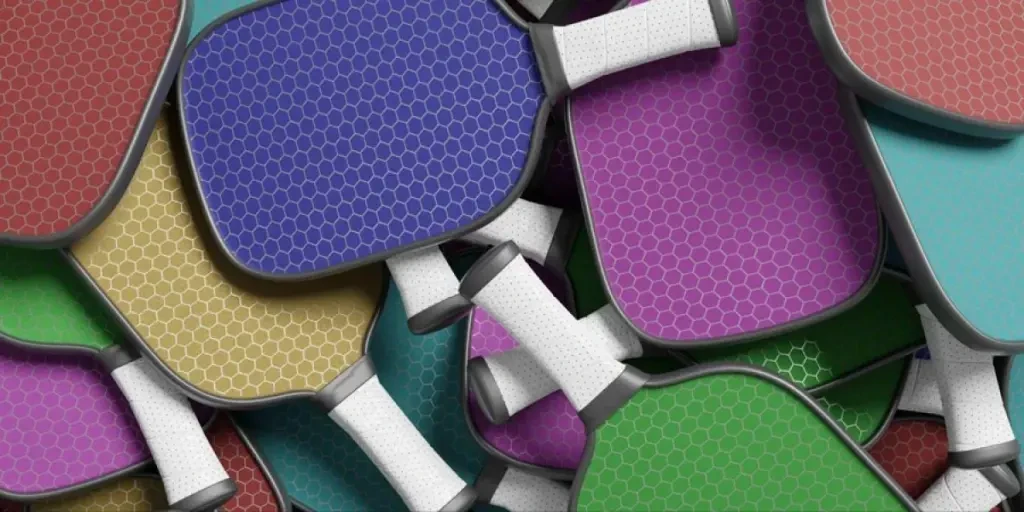Table of Contents
Introduction
Market Dynamics in the Pickleball Paddles Industry
How to Select Pickleball Paddles
Best Pickleball Paddles
Conclusion
Introduction
In the rapidly growing sport of pickleball, the choice of paddle is paramount, shaping both the player’s performance and the retail market’s dynamics. This guide, crafted for business professionals and online retailers, delves into the critical aspects of pickleball paddle selection, highlighting the nuanced balance between material, design, and functionality. It navigates through the complexities of market trends, providing an analytical overview of various models and their distinguishing features. Tailored to aid in making informed purchasing decisions, this article serves as a comprehensive resource, enabling retailers to meet the evolving demands of pickleball enthusiasts effectively.
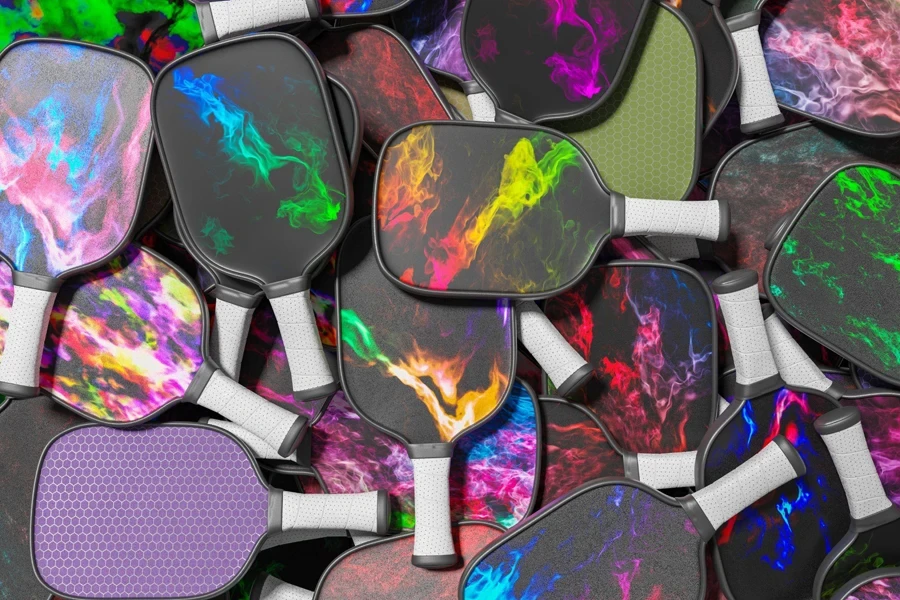
Market Dynamics in the Pickleball Paddles Industry
The pickleball paddles market is experiencing a significant surge in global interest, both from investors and top players in the industry.
- The global pickleball paddle market was valued at approximately USD 148.5 million in 2021.
- It is forecasted to reach USD 253.8 million by 2028, with a compound annual growth rate (CAGR) of 7.8% during the forecast period.
- Another report suggests a slightly higher CAGR of 8.0% from 2021 to 2027, with the market expected to reach USD 235.7 million by the end of 2027.
- The market size in the United States is particularly significant, with the country holding a revenue market share of 74%, followed by Canada with 5.4%
This growth trajectory underscores the increasing popularity of pickleball as a sport and the rising demand for quality equipment.
Key players in this market, such as Franklin Sports, Gamma Sports, HEAD N.V, Manta World Sports, Onix Sports (Escalade Sports), and others, are driving innovations and expanding their market presence. The market segmentation reveals a diverse range of products, with polymer core pickleball paddles emerging as the leading category. These paddles are known for their balance of power and control, making them a preferred choice among players. Additionally, the market is witnessing a shift in distribution channels, with brand outlets, franchised sports outlets, and e-commerce platforms playing significant roles in driving sales.
How to Select Pickleball Paddles
Core Material and Thickness
- Polymer Core: The most common material used, offering durability and a good balance of power and control. Quality varies across price points.
- Polymer Exceptions: Some brands use non-polymer materials like carbon fiber for different playing characteristics.
- Core Thickness: Affects paddle performance, with thicker cores (around 16 mm) enhancing control and thinner cores (between 10 mm and 14 mm) providing more power.
Surface Materials
- Fiberglass (Composite): Offers the most power, acting like a trampoline to transfer energy back to the ball.
- Carbon Fiber: Known for better feel than fiberglass, with less power but a larger sweet spot.
- Graphite: Similar in performance to carbon fiber, known for better feel and comparable power.
- Hybrids: Some paddles use a combination of materials for varied performance characteristics.
Paddle Shape and Size
- Elongated Shapes(Power Paddles): Longer paddles for more reach and power, but with a smaller sweet spot. Ideal for players seeking more reach and power, with a smaller sweet spot.
- Standard Shapes(Control Paddles): Wider paddles with a larger sweet spot and high maneuverability, but less reach and power. Suitable for players who prioritize a large sweet spot and high maneuverability.
- Hybrid Shapes(All-Court Paddles) : A balance between elongated and widebody, offering a mix of power, spin, forgiveness, and maneuverability. Perfect for players desiring a balance of power and control.
Less Common Ones:
- Extra-Elongated: This shape is 17″ x 7″
- Widebody: This paddle is shorter than 16″ long.
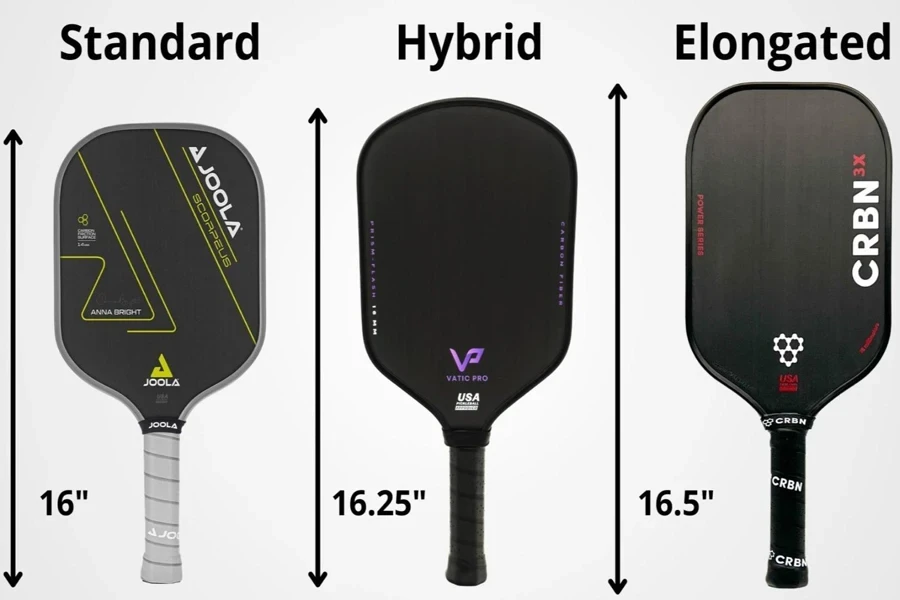
Weight and Balance
- Lightweight Paddles (7 – 7.6 oz): Easier to maneuver, suitable for net play but require harder swings for power.
- Midweight Paddles (7.6 – 8.2 oz): Balance between control and power, suitable for players of all levels.
- Heavyweight Paddles (> 8.2 oz): Provide more drive and power, suitable for baseline play.
Grip Size and Comfort
- Handle Length: Varies between 4.5 to 6 inches, affecting the surface area of the paddle face. Longer handles can generate more power and spin.
- Grip Size: Important for comfort and control, with a range of sizes to accommodate different hand sizes.
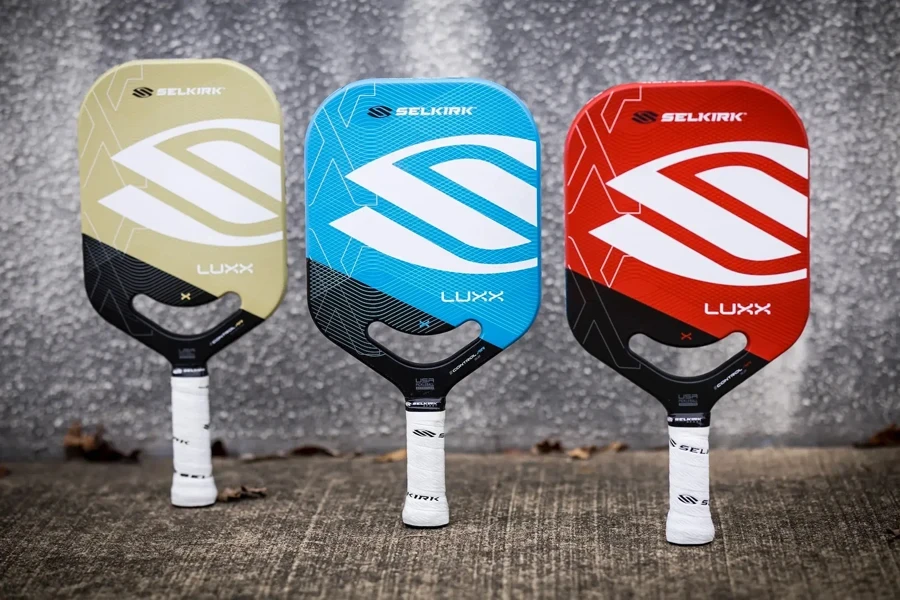
Best Pickleball Paddles: Models and Features
Overview of Top-Rated Paddle Brands and Models:
- Selkirk AMPED Epic: Best overall paddle, offering a balanced experience with premium materials and a large sweet spot. Ideal for players wanting a premium experience in everyday games.
- Onix V4: Best for beginners, with an oversized frame and strong edge guard for easy play. Features a polypropylene honeycomb core for a balanced hit. [Price: $60]
- Selkirk Vanguard 2.0 Invikta: Best for intermediate players, designed for aggressive play with a long, comfortable handle. Offers consistent control and USAPA tournament legality.
- JOOLA Ben Johns Perseus CFS 16: Best for advanced players, designed with input from top pro Ben Johns. Features a broad, flat top and rounded corners for full extension and challenging plays.
- CRBN² (Square Paddle): Best for control, with a unique square shape maximizing the legal sweet spot. Made with carbon fiber for enhanced spin and control.
- JOOLA Ben Johns Hyperion CFS 16: Best for spin, designed for maximum spin control with a Carbon Friction Surface (CFS) technology.
- Brooklyn Pickleball Co. Paddle: Best affordable option, a customer favorite under $50, offering a lightweight design and quality despite the price.
Price Range Analysis: Budget-Friendly to Premium Picks:
- Budget-Friendly Options: Priced around $40 – $60, these paddles offer good quality for beginners and recreational players.
- Mid-Range Options: Priced between $60 – $150, suitable for intermediate players seeking better quality and performance.
- Premium Picks: Priced from $150 – $250, these paddles are designed for advanced and competitive players, featuring top-notch materials and technology.
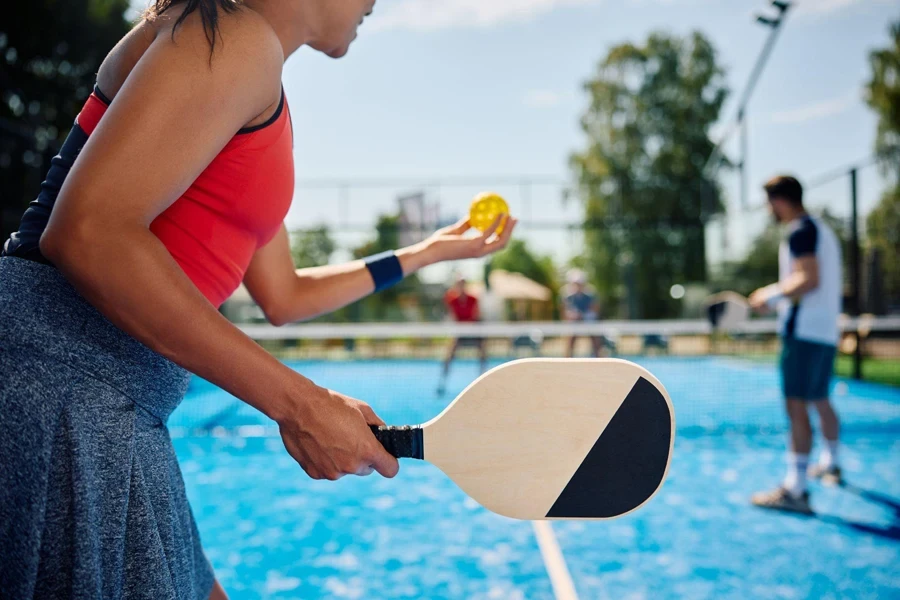
Conclusion
The journey to mastering pickleball paddle selection is a multifaceted one, crucial for retailers aiming to meet their customers’ diverse needs. This guide has underscored the importance of considering various factors such as core material and thickness, surface materials, paddle shape and size, weight and balance, grip size, and the balance between price and quality. By understanding these elements, retailers can make informed decisions, stocking a range of paddles that cater to the varying preferences and skill levels of pickleball enthusiasts. Ultimately, this guide serves as a valuable resource in navigating the evolving landscape of pickleball equipment, emphasizing the profound impact that the right paddle can have on gameplay and overall customer satisfaction.
